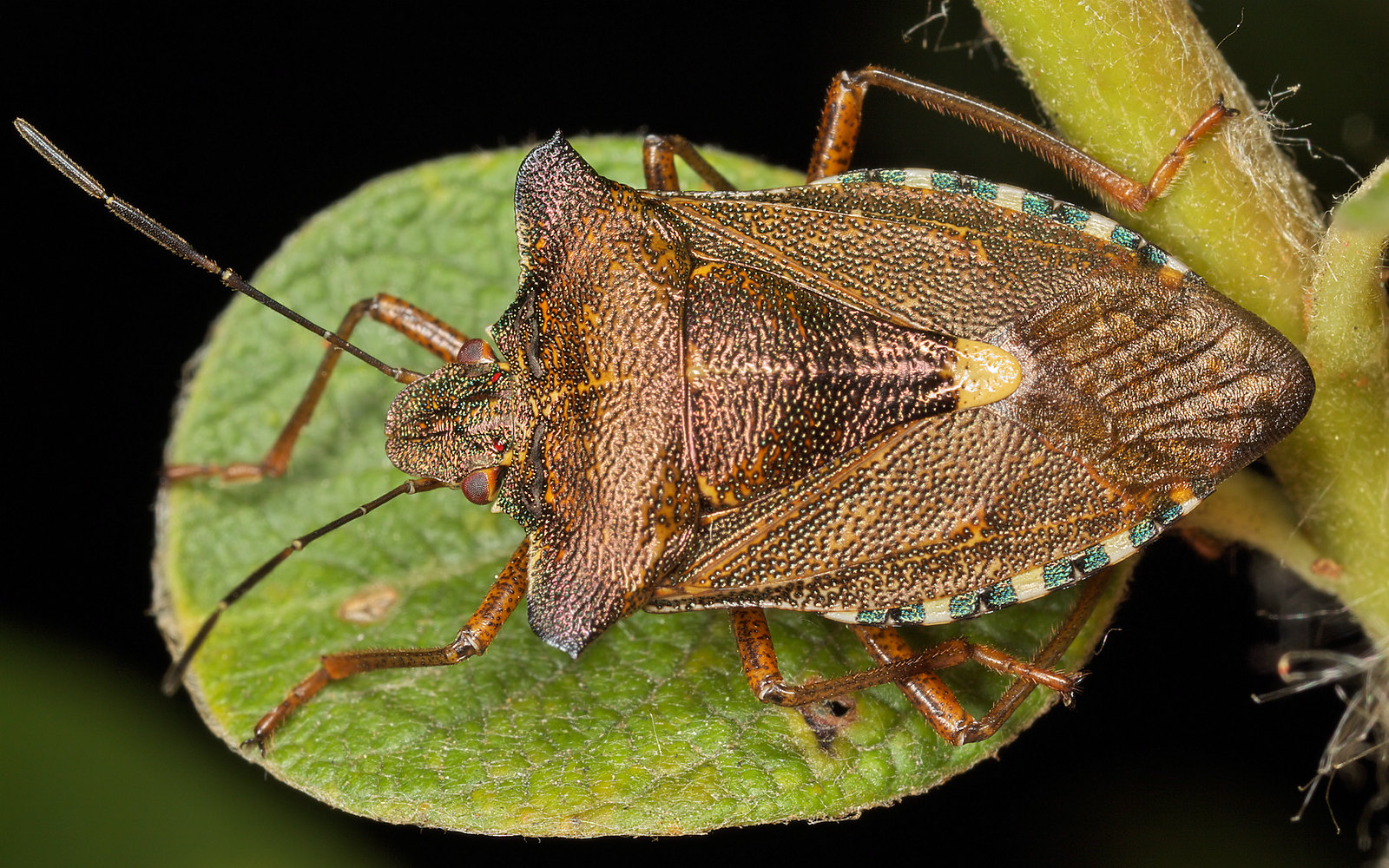Please click here to access the main AHDB website and other sectors.
- Home
- Knowledge library
- The Forest Bug (Pentatoma Rufipes)
The Forest Bug (Pentatoma Rufipes)

What is the forest bug?
The forest bug (A.K.A. red-legged shieldbug, Pentatoma Rufipes) is a commonly occurring and widespread shieldbug species in the UK. It is particularly associated with woodland habitats and may remain in woodlands throughout the year, feeding on tree species such as oak, beech and hazel. However, forest bug also occurs in orchards and is emerging as an important pest of tree fruit in northern Europe.
What does forest bug damage look like?
Their feeding activity on developing fruits is being linked with pitting and distortion damage to apples and pears:
- Damage to tree fruit is triggered when forest bugs feed early in the season on developing buds, flowers and fruits (shortly after flowering). This results in later pitting and severe distortion as the fruit develops
- Pears are particularly at risk of damage, but damage to apple has also been reported very recently in the South East and West Midlands of the UK.
How do I manage forest bug?
So far, there has been limited scientific research into the ecology and control of this species, but some Belgian, Swiss and German studies provide valuable information on the timing of the life-cycle and the effects of control products.
At the moment, there is no information available which links UK local population levels and activity with damage at particular times of the year. There has been no UK-based research on the effects of control strategies for forest bug populations or fruit damage. But we do know that:
- Low densities of infestation are sufficient for fruit damage
- Trees are likely to become more heavily damaged with age because the rougher bark of older trees provides shelter for overwintering nymphs
- The period of highest risk is before or shortly after flowering. Any control products targeting forest bug should be applied at this time to kill the nymphs as they become active and deform fruit.
Further reading
Click here to read:

